Is it possible to mix hair dye alone? Iron rules for mixing hair dyes.
It is not always possible to find “ready-made” paint of exactly the shade you dreamed of. And it happens that the manufacturer of the usual paint changes the palette, and the new tone is slightly different from what was ideal. You can correct the situation by “adjusting” the composition yourself, but this must be done carefully, taking into account the rules for combining tones. How to mix hair dyes correctly to get the desired color without the admixture of foreign shades?
Single line
It is best to mix paints not only of one brand, but also from a common series. In this case, the likelihood of unpleasant “surprises” is lowest. Paints of different brands should not be mixed. Due to differences in composition, the chemical reaction of the products will be unpredictable, and it will be almost impossible to guess the final shade.
It is not advisable to mix paints of the same brand from different series, but it is possible if you take into account additional rules for selecting colors.
Select by number
You should select paints for mixing not by the “marketing” name of the tone (like “sunny orange” or “melted chocolate”), but by number. The first number (usually out of three) indicates how saturated the color will be when using one product. The marking is from 1 to 10, where one is the darkest undertone. When mixed, saturated shades mute light ones and “dominate” in the composition.
The second and third numbers from the marking indicate the actual tone. When mixing, you should consider what type of dye is used as the paint base.
"0" means natural undertone using green pigment,
1 - ashy colors based on violet dyes,
2 - paint with greenish pigments,
3 - red-orange pigment,
4 - copper red,
5 - red-violet (or “mahogany”),
6 - purple with a hint of blue,
7 - reddish-brown pigment of a shade close to natural.
Mixing Rules
When mixing hair colors, the basic design rule of opposing colors applies. In the color wheel, red is opposite and opposed to green. Additional color for yellow - purple, for orange - blue.
Knowing about these combinations, you can not only mix a suitable shade, but also “correct” the result of unsuccessful coloring. If the color turns out to be greenish, you can correct the shade with paint of 4 or 5 tones of suitable saturation.
Paints of shades 2 and 3 should not be mixed with each other; the result will look green. When combining 2 and 4 tones, you will get a rich orange tint. The result of a mixture of 3 and 6 tones will give a blue or violet undertone.
You might also like:
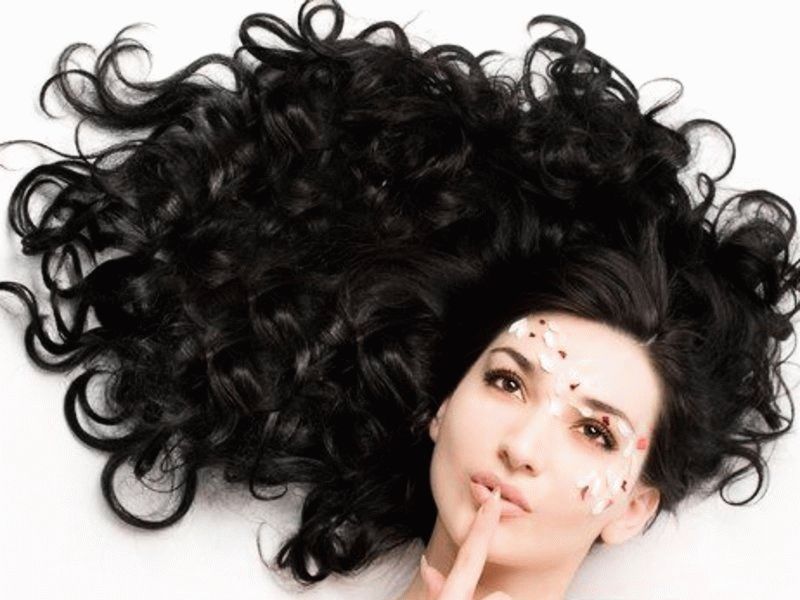 Porous hair what to do - treatment at home
Porous hair what to do - treatment at home
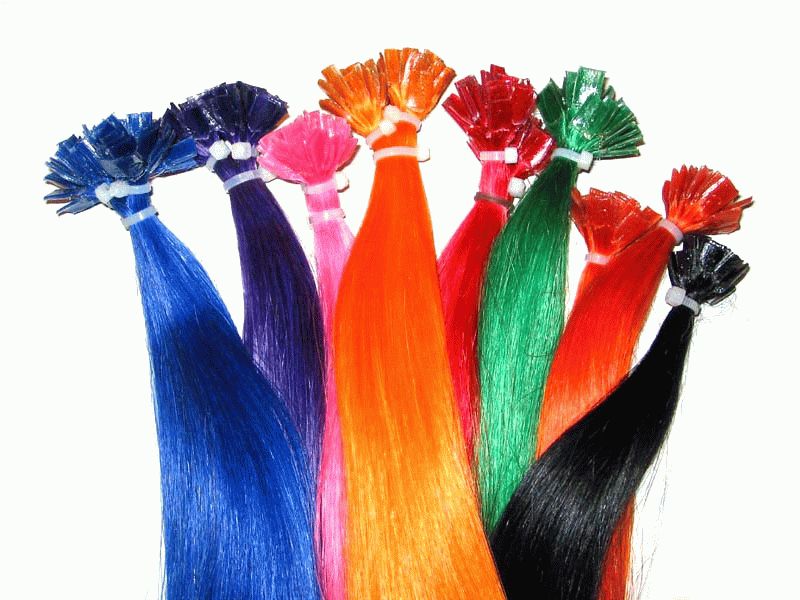 Hair dyes without harm - which ones to choose in 2016
Hair dyes without harm - which ones to choose in 2016
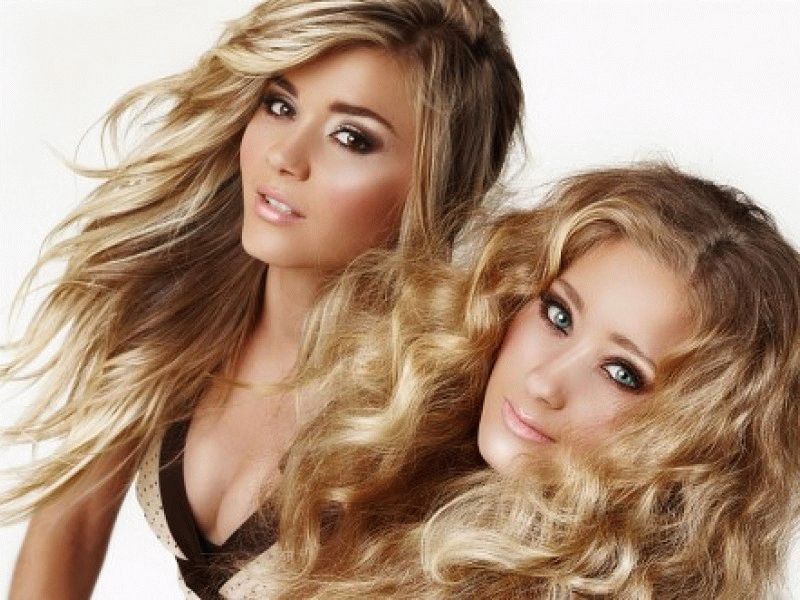 Highlighting with a spatula - techniques and types
Highlighting with a spatula - techniques and types
At all times, women have been proud of their lush and well-groomed curls. Considerable importance There was also a coloring of the hair. Curl care - necessary condition attractiveness. Therefore, the fair half of humanity pays considerable attention to hair color. Black hair suits some, brown hair suits others, and blond or fiery red hair suits others. Women like to change colors, mix different color schemes, experiment and find a fresh and suitable shade. How to find an acceptable option?
How to mix paints?
- It is important to mix similar color shades with different tones, for example, dark brown with medium brown.
- It is prohibited to mix dyes from different companies, since they are two completely different color palettes.
- A significant role is played by color ratio and total number paints.
- The hair color at the ends and roots differs from each other. Therefore, first dye your hair a color that is close to natural and then do experiments and mix the colors.
- Remember that the same color looks different on different hair. The level of color intensity and brightness depends on the exposure time.
Hairdressers and stylists advise not to dye your hair at home and go to a hairdresser. Stylists do not recommend radical color changes. An acceptable option is the one in which, after dyeing, the color will differ from the natural one by no more than two tones. With the strongest coloring, the hair structure will change and they will be more injured.
Shades of paints and features of their mixing
What color hair do you want to have? This is a question you can ask yourself before you start mixing paints. There are different characteristics of paints, ranging from airy to heavy.
Paints that are similar in shades and compatible with each other can be mixed. So, black paint mixes well with eggplant, and chestnut paint mixes well with copper. Truly complex action is mixing paints. Therefore, it is better to entrust this to a professional specialist: he will examine the hair structure, take into account the time of the last dyeing and the condition of the scalp. By coloring curls and curls under ordinary conditions, you can get an unexpected result.
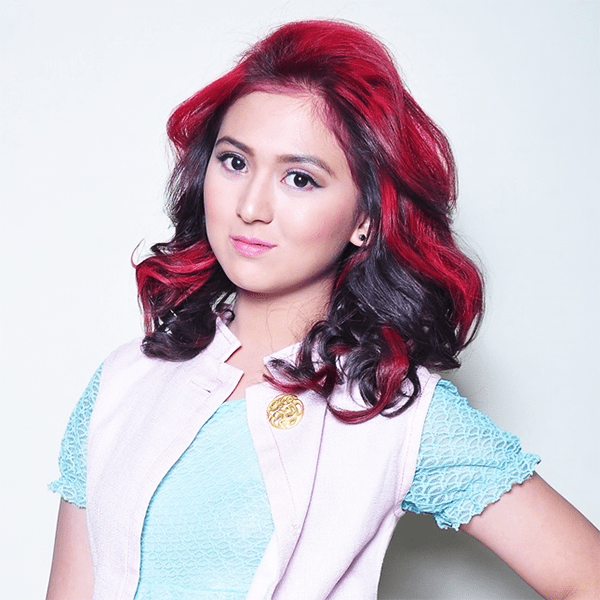
How to prepare for mixing paints?
Do you have any favorite colors? Then choose your shade. Then mix the colors and apply them to the lower part of the curls, so that if you fail, you can hide them in your curls. Follow the time indicated in the instructions, then wash them and dry them. You should mix no more than two colors at once. In order to accurately mix, select paints and find your favorite shade, you need to know the characteristics of the color.
The chemical composition of dyes from different brands is not the same.
Do not mix paints from several brands, as this is risky and can harm your hair and get unexpected results.
The paints must be mixed in glass, plastic, and ceramic containers. Do not mix them in metal containers. Wear gloves when painting.
Proper mixing of paints
- Mix one paint in different dishes, as described in the instructions, and then the other.
- Next, carefully mix these colors with a brush.
- After mixing, apply the paint to the curls and curls and leave them exactly for the time specified in the instructions.
The reactions that occur when mixing dyes are instantaneous. For this reason, it is necessary to quickly, but carefully and thoroughly dye your hair. Remember that paint reacts with air. After half an hour it becomes unusable.
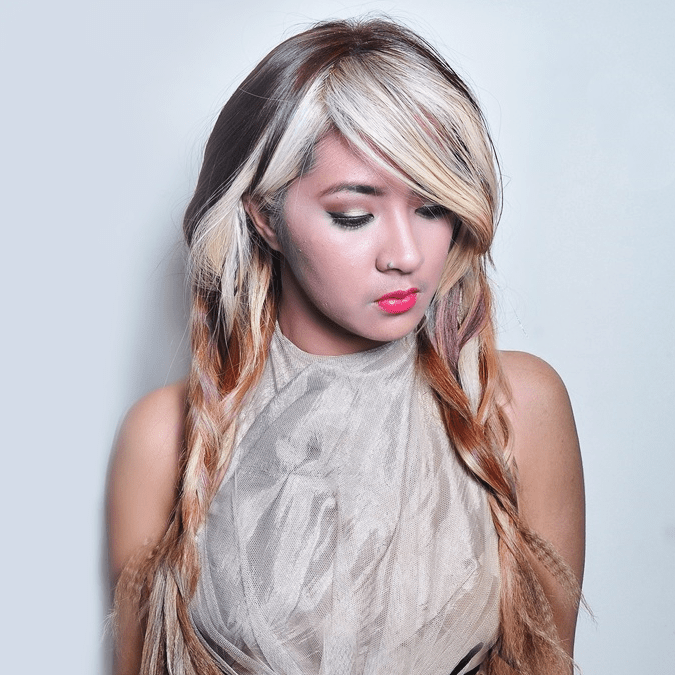
Professional paints have a certain gradation of three numbers. Number 1 is the degree of lightness and saturation. They are designated from 1 to 10, where 1 is the darkest undertone. The second and third numbers after the dot are additional tones.
Check out the table of additional tones:
0 – natural tone with pale green dye;
1 – ashy shades with purple dye;
2 – matte shades with greenish dye;
3 – golden shades with reddish-yellow dye;
4 – red shades with copper dye;
5 – mahogany with lilac-red dye;
6 – purple shades in combination with blue dye;
7 – terracotta shades with reddish-brown dye.
When mixing shades 2 and 3, the result is green, 2 and 4 – bright orange, 3 and 6 – blue.
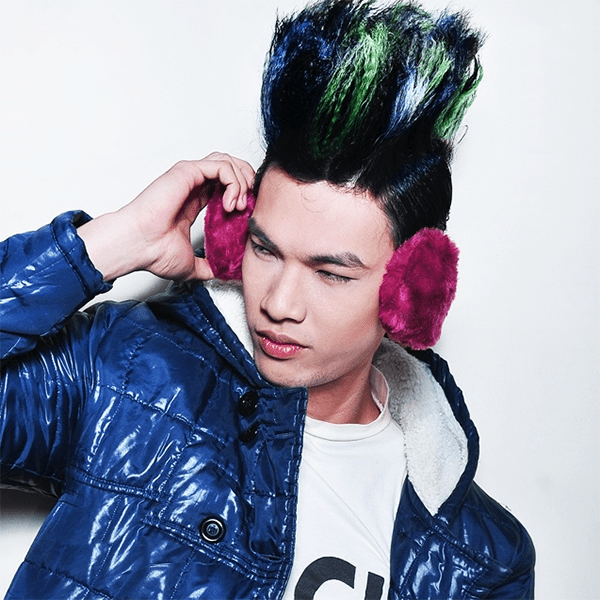
To mix colors in the color wheel, the rule of opposite colors applies. Through this circle you can learn about colors that neutralize each other. So, red and green are opposite colors. The complementary color for yellow is violet, and for orange it is blue. Considering this rule, you can safely mix and get suitable shades and fix bad coloring. If the hair has acquired a green tint, the color can be corrected with dye 4 or 5. You cannot mix dyes of tones 2 and 3, as the result will be green. Combining shades 2 and 4, you get a juicy orange shade. By mixing 3 and 6 tones, you get a mixture with a bluish color. Get rid of the green tint by using tones 4 or 5.
- When stirring different colors It’s better to choose similar shades, since you will do little damage to your hair and insure yourself against an unexpected result.
- Professional paints mix better. If you want to get the desired color at home, mix different tones and apply the composition to separate part curls. If the result is positive, repaint this color.
- The coloring result depends on the color of previously repainted curls and ringlets. If your hair is dark brown, you won’t be able to lighten it five shades in one dyeing session. Experts advise making transitions to lighter tones with each subsequent coloring.
Mixing paints at home
Choose two shades of the same paint from the same company. Stir them in a bowl. Then apply it to your curls. To achieve the shade you want, you need to set the color depth by temperature and exposure time. The final shade will turn out juicier, more saturated at high temperatures and long exposure times.
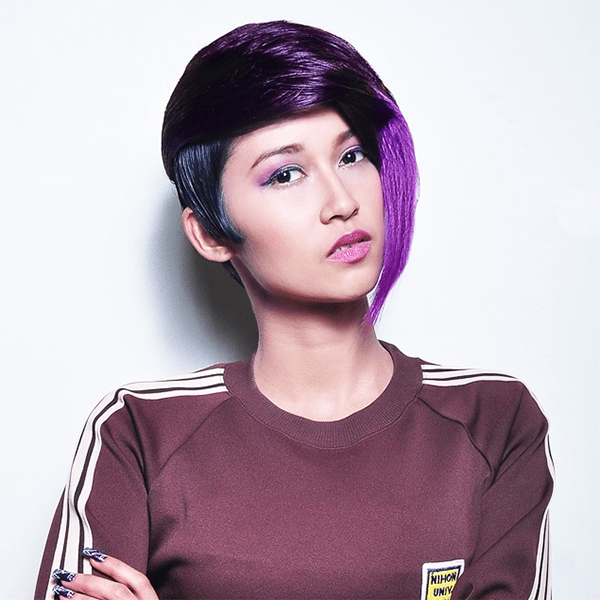
Let's look at hair coloring methods different colors.
Ash hair color
This charming color “endows” its owner with sophistication. Eat various shades ashen color: from light brown, light to dark ash. There are many women who want to dye their locks this charming color. Of course, it is not suitable for everyone, since it can give the skin gray shade and highlight skin imperfections. Who is it suitable for? ash hair? Girls with blond hair, grayish - blue eyes And fair skin, can safely paint themselves in “ashes”.
To achieve this spectacular color, your hair needs to be light color. Not all women have such strands, so lightening is done by 2 - 4 tones and then “ash” color is used. Buy a lilac tonic, apply it to your strands and do not wash it for 1 day. Renew and refresh the color after 6 – 8 shampoos. To preserve color long time, you need to use balm and special shampoo.
It is better to lighten the darkish roots that appear at a hairdresser or salon, since this is not an easy process. But, if you want to carry out this action under normal conditions, then use a proven clarifier. Apply to hair roots for 10-15 minutes and then distribute evenly throughout hair.
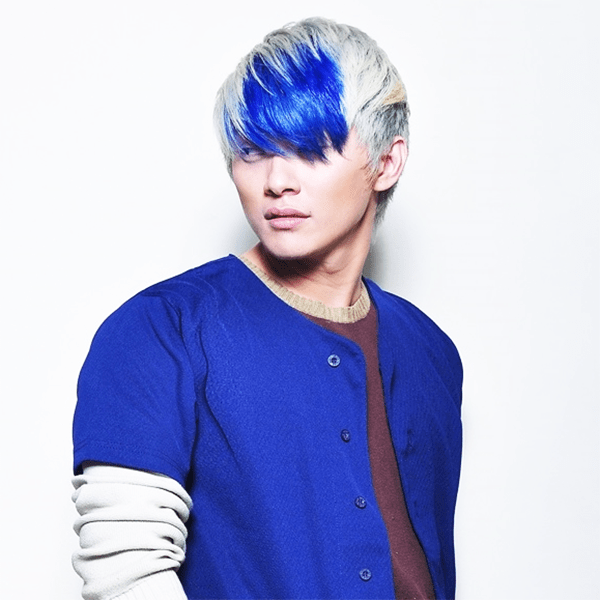
It is important to note that in ashy color contains a violet pigment and when dyed independently, a greenish tint may appear on the hair. Therefore, it is better to entrust hair coloring in this “aristocratic” color to a hairdresser - stylist.
Brown hair color
This universal color will suit every hairstyle. It has different tones from dark, light, to golden chestnut.
What features exist when dyeing an elegant chestnut color?
- Before dying your hair this elegant color, brunettes would do well to...
“wash” the pigment. This procedure is done in salons. You can achieve an even “chestnut” in stages. - Light roots will appear in blondes after dyeing their hair brown. Therefore, in order to refrain from this, first of all this paint is applied to the roots and only at the end to the length of the strands and ends, where the color is stronger. To prevent the paint on the ends of curls and curls from being too absorbed, they are moistened with a small amount of water.
- Red-haired girls have no problem dying their hair this practical color.
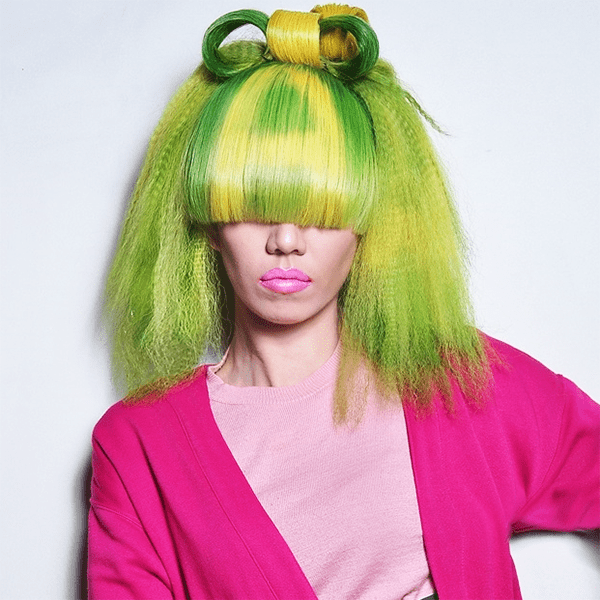
Get a reddish shade of chestnut color using these or henna. Mix 3 parts henna and 2 parts basma. To obtain a dark chestnut shade, the proportions of henna and basma must be equal. Leave the dye on your head for 40 to 90 minutes. These dyes with natural and beneficial pigments restore the hair structure and give it a natural shine.
Red hair color
Attractive red-haired girls stand out with their appearance and attract the gaze of others. Therefore, there are many women who want to know the subtle differences in dyeing their hair this extravagant color. Red hair has shades ranging from dark red to purple. Brunettes with dark skin can safely dye their hair dark red, and blondes and fair-haired girls with fair skin can dye their hair golden chestnut. Copper red and bright red will not suit them. At blonde hair And dark skin Dark caramel color is suitable. Chestnut and light red hair will not suit them.
If you want to get a color that is 2-3 shades darker than your hair, you do not lighten your hair before the main coloring. Apply the dye you need to the previously prepared curls. If owners of dark hair want to dye it a light red shade, then by all means.
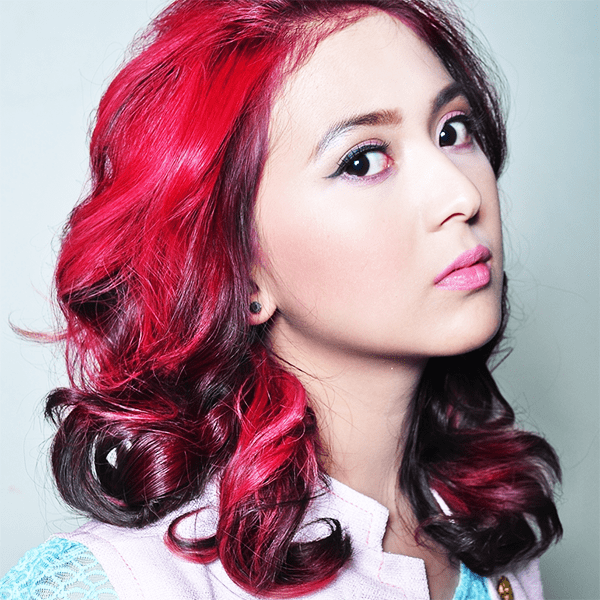
Before repainting this extravagant color, remember some important points:
- If you have doubts and are not sure what shade of red you want to dye your hair, use tinting agents that can be washed off with water. As soon as you find a shade that suits you, you can use this dye.
- If you want to dye your gray hair red, consult a specialist stylist, as it will be difficult to choose the dye yourself.
- Give up the idea of hiding your age and repainting your hair this way. bright color, because it attracts people's gaze and with a wrinkled face, they immediately become visible.
The benefits and harms of hair coloring
Having colored the hair, it becomes silky and soft. Natural paint, like, heals them. How intense the hair color will be will depend on the ability of the hair to take on the pigment.
Modern hair dyes contain B vitamins and plant extracts. They enhance hair growth and strengthen the hair follicle. Dyes also prevent hair loss.
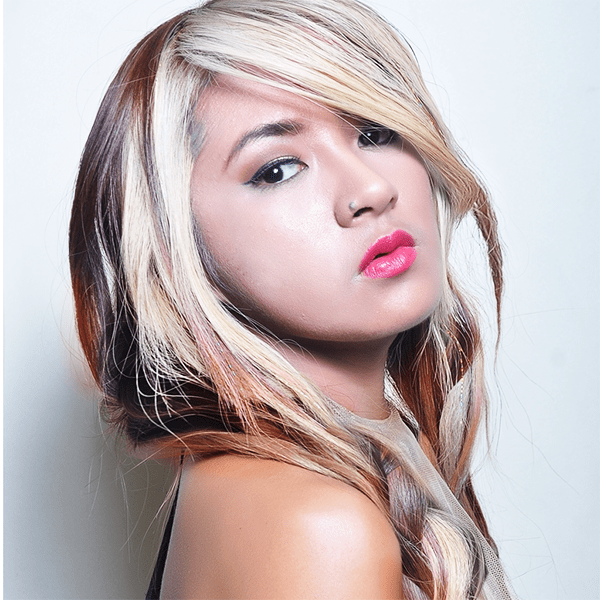
But coloring also has negative sides. The ammonia contained in dyes destroys the internal hair structure. If the paint is overexposed, the hair becomes brittle and hard. Dyes can cause allergies due to chemical substances contained in them. Therefore, when coloring your hair, think about whether it will be beneficial or harmful to you, and consult about this with specialists - stylists, as well as doctors.
Dear women, follow the order of mixing paints, which consists of choosing shades that suit you, select the right level of tonal depth. Trust experienced stylists and hairdressers to purchase the hair color that suits you. Well-groomed hair is the main thing in a woman’s appearance. Take care of your hair, because your hair can tell you about your health.
Mixing hair dyes of different colors and shades: rules, tips.
Mixing hair and eyebrow dyes is not easy. The science of coloristics deals with such experiments.
To achieve the desired result, you must be very careful in the process of mixing colors and shades of paint, since the original color can be very surprising. In this article we will look at how to correctly combine colors, mute or, conversely, highlight shades and halftones.
Mixing hair dyes - color palette: table
- First of all, you need to understand what colors and shades of hair dyes are presented on the shelves of modern stores, and how to recognize them.
- On a pack of hair dye you can find various numbers - usually there are three of them - one number is located before the dot, and two after the dot.
- The first digit of the code indicates the basic tone of the color.
- The first number after the dot is responsible for the color of the main shade.
- The second number indicates the color of the auxiliary shade.
- Typically, there are 10 basic tones.
- Tone number 1 often corresponds to the darkest color - black.
- Tone number 10 is most often the most light color in the whole palette.
- If you mix dark and bright hues, then the original tone color will be located in the middle color palette between the tones used.
- As for the shades of flowers, there are only 7 of them.
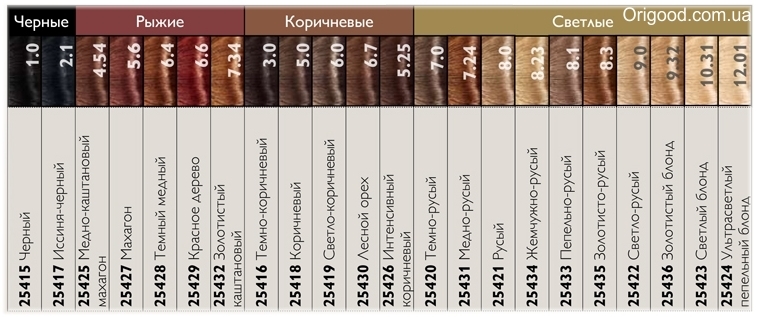
Manufacturers often use the following ratio of tone numbers and their color solutions:
- Tone 0 is a basic tone and may have a slight greenish tint.
- Tone 1 is considered an ashy tone produced using violet dye.
- Tone 2 refers to a matte greenish tone that can smooth out the unevenness between colors.
- Tone 3 is a yellowish-red tone.
- Tone 4 is responsible for the red or copper tint.
- Tone 5 is distinguished by a reddish-violet hue, in everyday life it is called “swallowtail”.
- Tone 6 is considered a blue-violet pigment.
- Tone 7 is a combination of red and brown.
To find out what color and shade you will get when mixing different colors and tones, you can use a special table:

How to properly mix hair and eyebrow dyes of different shades to obtain the desired color: proportions
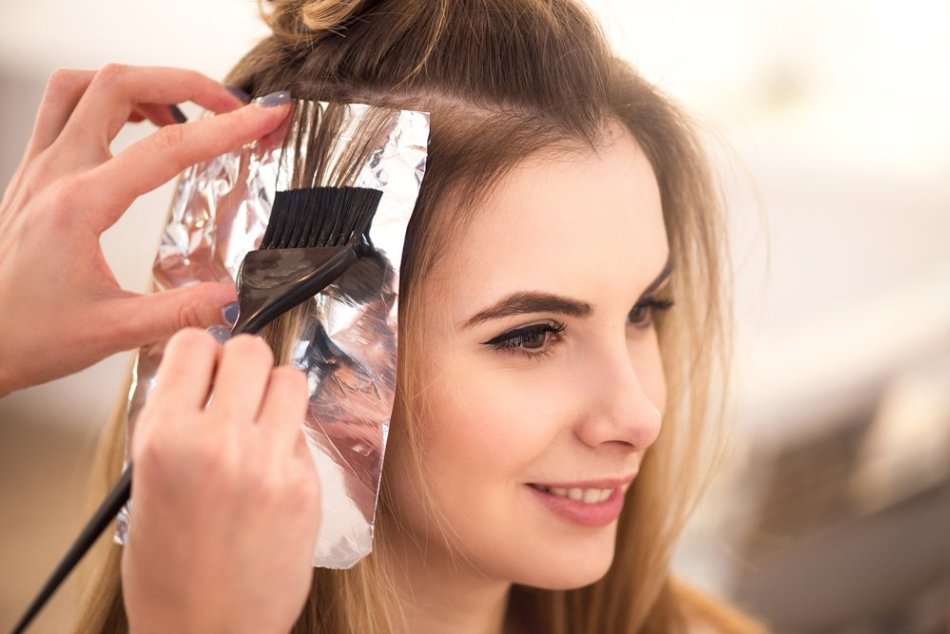 Rules for mixing different colors and shades of hair and eyebrow dyes
Rules for mixing different colors and shades of hair and eyebrow dyes When mixing hair and eyebrow dyes different shades It is necessary to adhere to a number of rules that will allow you to achieve the desired result and not spoil your hair:
- You should not mix more than three shades at the same time.
- Before the procedure, it is necessary to evaluate the hair - its condition (dryness, damage, irritation of the scalp), original color (natural or dyed, dark or light), the presence of gray hair (it is more difficult to cover gray hair).
- When mixing colors, it is best to choose more suitable and similar colors. color scheme shades.
- Before preparing the coloring agent, you must carefully read the instructions on the box.
- On partially gray or dyed hair, it is recommended to pre-even out the color.
- It is advisable to test in advance on a separate strand of hair.
- Each type of paint must be prepared separately and only then - combine them all in one container.
- It is recommended to add pigment to the oxidizing agent, and not vice versa.
- For hair of medium length and thickness, about 60 ml of dye will be required, for longer and Thick hair it may take 120 ml of dye, and for very long and thick hair - from 180 ml.
- The oxidizer and paint must be mixed in proportions of one to one.
- In the case of hair tinting, their ratio should be one to two.
- When dyeing your hair dark colors, you can use a 3% oxidizer, when switching to a slightly lighter tone, you can use 6% oxygen, and when dyeing light colors or lightening your hair, it is recommended to use a 9-12% oxidizer.
- The ratio of the two different colors the mixture should be one to one.
- If desired (when you want your favorite tone to dominate a little), you can slightly change the proportions of the colors relative to each other - you can take more of your favorite shade.
- It is recommended to use the finished mixture within half an hour after mixing it.
- The exposure time of the dye on the hair directly depends on the instructions from the manufacturer.
- Before applying dye to your hair, you must ensure that your hands are clean and safe - you must use gloves for this.
- Fatty products such as cream or cream will help protect the skin of the face and ears from unwanted staining. They need to treat areas of the skin that may get paint.
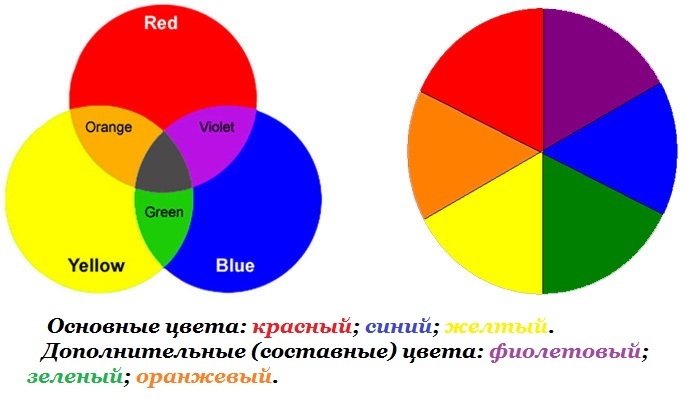
- As strange as it may sound, in color there are only three primary colors - red, blue and yellow.
- All other colors and shades are derived from these colors.
- There are secondary colors - these are colors that are the result of mixing primary colors.
- It is also worth mentioning about tertiary colors - we owe their formation to the mixing of primary colors with secondary ones.
- All possible combinations mixing primary, secondary and tertiary colors with each other forms the so-called color wheel.
- In the color wheel, all colors are divided into cold and warm.
- Colors prohibit mixing warm and cold colors with each other.
- Colors located opposite each other on the color wheel are counter colors - it is not recommended to mix them with each other.
- So, for example, red and green are considered counter colors.
- It is also unacceptable to mix purple and yellow flowers or blue and orange.
- Countercolors can be used as neutralizers of an unwanted color - if you apply its countercolor to a certain color, it will simply be eliminated.
To achieve desired result and not to make a mistake with colors and shades for mixing hair dyes, it is best to use the color wheel:
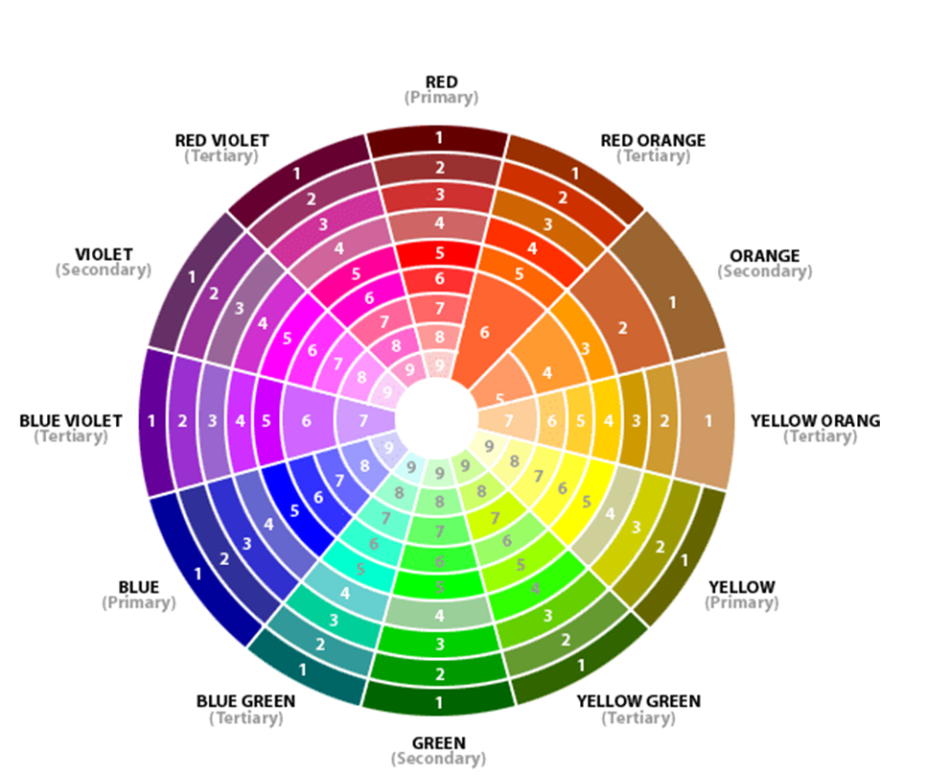
Is it possible to mix different hair dyes?
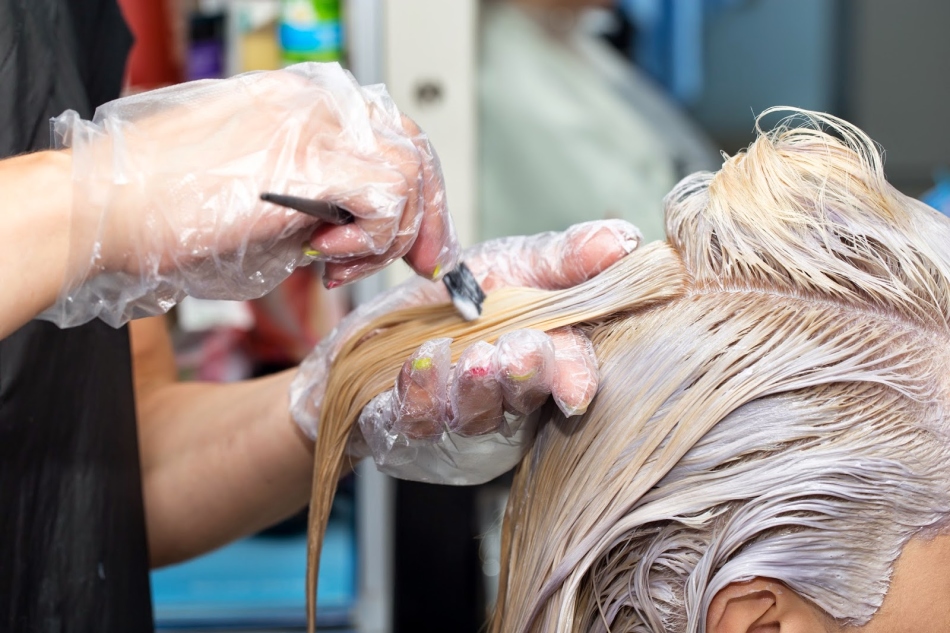
- It is strictly forbidden to mix hair dyes from different manufacturers. The fact is that each manufacturer has its own color palette. In addition, completely different ingredients and technologies are used in the production of hair dyes. No one knows how the components of different paints can behave, and what initial color can be obtained.
- By the way, professionals do not recommend mixing paints from the same manufacturer, but from different series.
- The best option is to mix different shades of paint from the same manufacturer and series.
Is it possible to mix paint in glass containers?
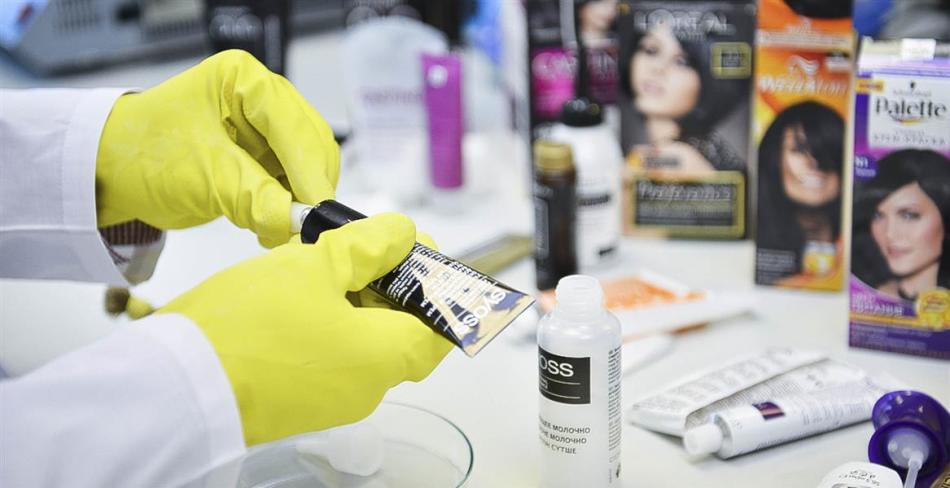
- Mix hair or eyebrow dyes only in a glass, plastic, porcelain or ceramic container.
- If you mix paints in a metal container, an oxidation reaction may occur, as a result of which the composition of the paint may change slightly.
- All these processes can significantly affect final result— you should be prepared for the most unexpected color scheme.
The science of coloristics answers the question of how to properly mix hair dyes. It discusses all aspects and nuances of the mixing process, how, in what proportions and with what shades to combine colors. Armed with its laws and rules, it is easy to achieve the expected individual incredible effect.
Aspects of Paint Mixing
Preparation for the process begins with choosing the desired shade, taking into account the combination of colors and coloring pigments found in the hair and in the selected dye.
There are no restrictions on the color scheme - they use all of them. It all depends on the flight of fancy and attitude. There is only one rule: do not mix more than three different tones. To achieve a unique individual result and a well-saturated, rich shade, when mixing paint, use one line of one brand. Products from different brands are not the same in their chemical composition, active substances and coloring agents.
For beginners who do not know how to properly mix hair dyes, it is better not to undertake radical experiments on their own. It is more acceptable to start with small changes, for example, dyeing a small strand or tinting the color in half-tone increments. Unsuccessful experiments are sometimes difficult to correct: you have to completely re-dye your hair again, which leads to dryness, causing a lot of trouble in restoring its healthy state.
To achieve such characteristics of shades and colors of hair dyes as richness, airiness, richness, softness, the following techniques are used:
- contrasting original strands, when individual locks of hair are dyed in a contrasting color;
- smooth transition - tones bordering on the color scheme are mixed.
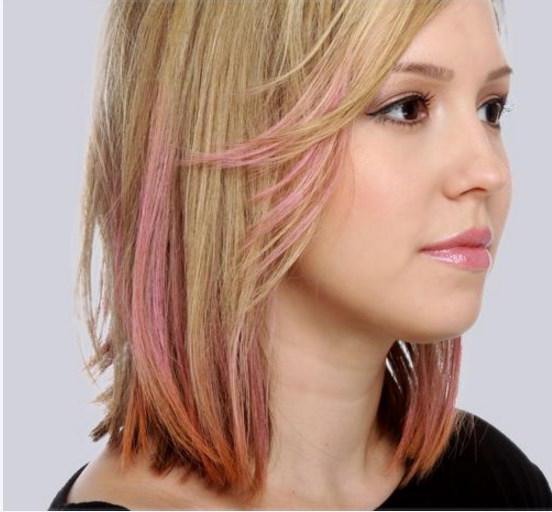
Paint mixing process
Before painting, determine the type and density, the degree of their damage, the presence gray hair, check the composition for individual tolerance, take into account the original and initial color at the time of dyeing, as well as the presence of a perm.
When mixing hair dyes, learn the important rules that must be followed:
- Read the instructions on the packaging.
- For an error-free selection of shades, use the color table.
- Mix a small test amount of paint, watch and evaluate the result.
- Do not mix palettes from different brands.
- Strictly observe the proportions of the ratio of coloring substances.
- Gray hair is dyed in two steps (first, uniformity is achieved, then the main tone is applied).
- The coloring result depends on the thickness, thickness and individual pigment of the hair.
- Only glass, plastic, plastic and ceramic containers are used.
- It is advisable to use diluted paint within 30 minutes.
- Take care in advance and prepare the composition to wash off the unwanted color result.
- Each paint is prepared separately, then the colors are carefully and carefully mixed together.
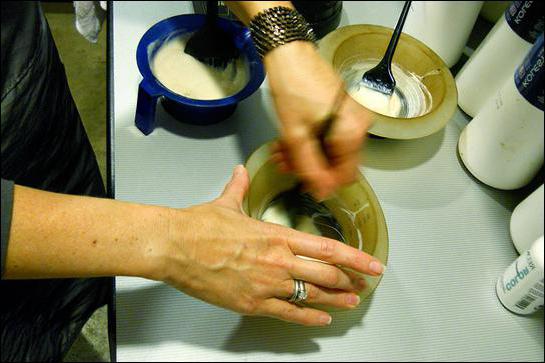
Achieving high performance color fastness, follow the rules:
- For hair of medium thickness and length, the volume of dye used is about 60 g.
- Oxygen and paint are mixed in a ratio of 1:1, when tinting - 1:2.
- When lightening hair, use a 9% oxygen solution, and when dyeing dark colors - 3%.
The depth and richness of the color are regulated by the exposure time of the dye on the hair being dyed and the temperature at which the process is carried out.
Achieving the desired shade
Mix colors, experiment, follow all the rules on how to properly mix hair dyes, and you will definitely get the expected result.
The technology of mixing closely related shades of one has a positive effect. color scheme, but in different tones, for example, light and medium brown. If there are residues on the roots from previous dyeing, achieve a uniform color before mixing. The correct color ratio will give the desired result (darker, lighter), taking you one step further towards the science of how to properly mix hair dyes.
The Golden Rule of the Color Wheel
Colorism conventionally divides colors into warm and cold, and also identifies three main (primary) colors: yellow, blue and red. never mix with each other. The remaining shades are derivative, or analog. They are obtained by mixing different proportions and are the most acceptable in various combinations and combination. They have their own gradation:
- Secondary - mixing two primary colors in equal parts, for example, yellow and red will give orange.
- Tertiary - mixing one primary and one, for example, red and purple will give crimson.
Using the golden rule color wheel, it's easy to understand:
- how to correctly combine it with eye and skin color, type of appearance;
- how to avoid mistakes.
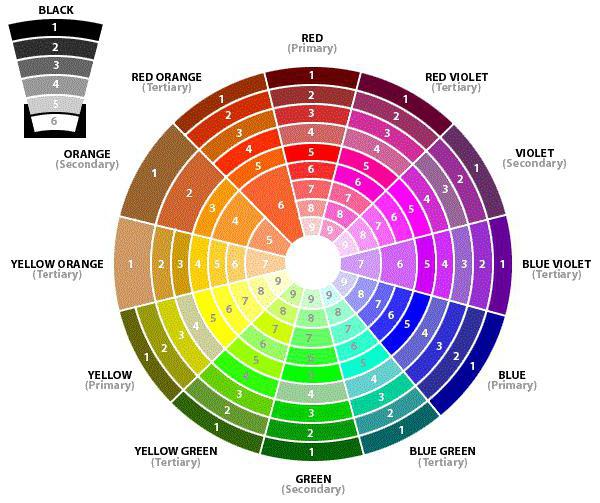
The colors of the circle are divided into warm and cold, and they are not compatible.
From shade to shade in a circle they go clockwise. The colors opposite are neutralizing (countercolor). They are used for correction or when removing an unwanted shade. All combinations of neutral colors give the effect of natural hair.
Advantages of professional paints
The color range of professional paints compares favorably with household paints on sale. Professional compositions have larger collection colors and nuances of shades, which makes it possible to obtain an unlimited number of mixing options. On their packaging it says digital code indicating how to mix correctly professional paints for hair. The number indicates the lightness level, where 1 is the darkest (black) tone, and 10 is the lightest (blonde). Accordingly, dark will muffle or average out the effect. The rest is decided by halftones - shades. First, indicate the main (depth of tone), then the auxiliary (color nuance), and, finally, the additional nuance of shade. This data will help you understand how to mix hair dyes according to the shade chart.
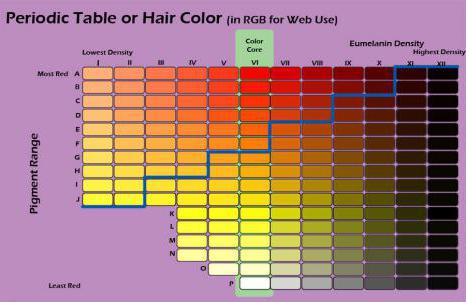
Mixton
When correcting tone and to enhance the shade of a color scheme, mixtones are used. They are not used independently for coloring, only after preliminary lightening of the hair.
Mixtons work well to enhance the natural palette. With their help, non-traditional, exclusive, unusual, matte and ashy variations are obtained.
Today we talked about such a procedure as mixing hair dyes. Important Rules were listed above.
03 Nov 2011
How to mix hair dyes according to the shade chart
Anyone who has ever used hair dye knows that it is sold in the form of several bottles. That is, you need to prepare the paint yourself by carefully reading the instructions and mixing all the ingredients in a certain order. In order for the paint preparation process to proceed correctly and be safe for health, the instructions say that we prepare special dishes in advance and wear protective gloves for our hands. And only after this can you begin preparing the coloring mixture.
Why don’t manufacturers produce ready-made hair dye? Let's try to figure out this problem.
The process of hair coloring occurs due to chemical reaction two components: a brightener-oxidizer and the pigment itself. These components, when kept separately, are quite neutral and can be stored for a long period. But when they are mixed, a fairly violent reaction occurs, which promotes coloring. After mixing the components, they can be stored for no longer than half an hour and after this period it is better not to use the paint.
Shade table
|
Hue |
Ash Row |
Golden row |
Copper row |
Red row |
Purple row |
Brown row |
Matte pearlescent |
|
|
Tone level |
||||||||
|
10 |
Platinum blonde |
Blond | Golden dark blonde | - | - | - | - | Platinum pearl blonde |
| Bright blond | Ash blonde | Golden champagne | Copper blonde | Pink blond | Platinum | Caramel | Bright pearly blonde | |
| Blond | Ash blonde | Golden blond | Light copper | - | Pink tree | - | Pearl blonde | |
| Light brown | Light ash | Golden light brown, amber | Copper | Light red | - | Hazelnut | Nordic blond | |
| Medium brown | Medium ash | Golden medium brown, cognac | Titian | Garnet red | - | Reddish brown | - | |
| Dark blond | Dark ash | Golden dark brown | Copper mahogany | Fire red | Burgundian | Chocolate brown | - | |
| Light brown | - | Light brown golden | Chestnut | Dark red | Mahogany | Rosewood | - | |
| Medium brown | - | Golden brown | Dark chestnut | Ruby | Bozhele | Mokho | - | |
| Dark brown | - | - | - | - | Eggplant | - | - | |
| Black | Blue-black | Golden black | Red-brown-black | Red-black | Purple-black | Brown-brown | - | |
|
Mixton |
- | Ash, gray, blue | Golden | Golden red | Red | Violet | Green | Bright, light |
Before dyeing your hair, it is recommended to carefully read the instructions and find out whether the entire composition needs to be mixed in a ceramic bowl or only part of it. Usually, the dye is designed for a hair length of at least 20 cm, so if you short hair, the paint can be divided into 2-3 doses. In the same way, if you have long and very thick hair, you will have to immediately use two packages of dye with the same number.
Also, before using this or that hair dye for the first time, do not forget to test for an allergic reaction. It is done within 24 hours using the active substance - apply a small amount to inner side bend of your elbow and see if any redness appears. If not, then everything is in order, the paint can be used. If the test gives a positive reaction, you should look for another, more gentle paint.
What to do if the desired shade is not in the selected series? Is it possible to mix shades to get a different color? Answer to this question will be unequivocal - under no circumstances! Mixing different colors can lead to unpredictable results in both shade and chemical reaction. Hair dye is not watercolor and can be safely mixed in any proportion. It is also not recommended to take a pigment of one brand and an oxidizing agent of another. Each manufacturer makes paint components compatible friend with a friend, but if you mix them, you can get a mixture that is hazardous to health. Do not use paint after its expiration date.
But how can you get the desired hair shade? Most often, the depth of color can be adjusted by the time the dye is left on the hair and also by the temperature - the higher the temperature at which the hair is dyed, the richer the shade will be. Don't forget about leftovers too old paint on your head - most often it will also begin to take part in the chemical dyeing process - which can make the result quite original and, perhaps even successful.
There is another good method to experiment with an exclusive hair color: you can dye the strands in different colors. The most important thing is that all the shades on the head do not discord with each other. But you are unlikely to be able to do this on your own, so it is better to visit a beauty salon, where hairdressers will help you choose the best colors and make you an attractive hairstyle based on them.
How to choose the right hair dye
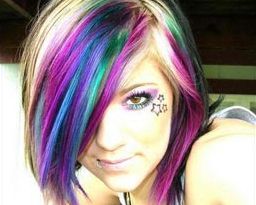 If you have a desire to lighten or dye your hair in any shade, you will never have problems with the assortment. The shelves of cosmetic stores are literally bursting with hair dyes of various colors and shades, and the names of companies dazzle your eyes. The product differs not only in names, but also in prices. And how can you not get confused?
If you have a desire to lighten or dye your hair in any shade, you will never have problems with the assortment. The shelves of cosmetic stores are literally bursting with hair dyes of various colors and shades, and the names of companies dazzle your eyes. The product differs not only in names, but also in prices. And how can you not get confused?
It would seem nothing complicated: I went to the store, chose the right color. For example, we need copper-red. We are looking for a box on the shelf where a girl is drawn with suitable color hair, we buy. Then we come home and do everything that the instructions require of us and.... in the end we get a bright green shade or some other shade, but absolutely not copper-red. Why did it happen so? After all, we have fulfilled all the conditions written in the instructions!
First of all, you should remember that when choosing a hair dye, you should take into account not only the color that manufacturers promise us, but also the hair color that you had before dyeing. Was it your natural color or the result of using a different hair dye? It is also important to know what your hair structure is. If your hair is thin and soft, it will lend itself to coloring faster, the depth of color will be greater and the desired result can be achieved much easier. And if your hair is curly, coarse and thick, then dyeing such hair will take much longer.
The same hair dye will give completely different results on seemingly similar hair with the same shade. Hair has a complex chemical structure and each person has its own composition. Therefore, by the way, it is not recommended even for close relatives to buy the same, even the most wonderful hair dye - the result after coloring can be completely different. The result will also be different on healthy and diseased hair, as well as on hair that has recently been permed.
When choosing a hair dye, the brand of the dye is of great importance, as well as its chemical composition. Thus, many companies produce gentle series of paints with natural coloring components. Such series may give a less strong depth of hair coloring, but when dyeing the hair structure is not disturbed and the hairstyle will look more natural.
When choosing hair dye in a store, you should not settle for cheap options, no matter how much they are praised by commercials and brochures. Cheap dyes often use inexpensive aggressive lighteners, which can disrupt the structure of the hair, make it hard and split, and even lead to increased hair loss. After using such paints, under the influence of the active substance, the scalp may burn or various allergic reactions may occur. The result of coloring itself can also be unpredictable, which does not help improve our mood.
How to buy hair dye and, after using it, get exactly the result you expected? Most manufacturers of high-quality paints in the mid- and high-price categories include catalogs with samples with their paint series. Most often, this is an album or stand with multi-colored hair ponytails glued to them, under which is written the number of the dye with which this ponytail was painted. This method of selecting paint is more effective than using cardboard packaging. Still, cardboard and hair differ in their structure, and besides, printing ink is used on the packaging, not hair dye.
Also don't forget that if you have enough dark color hair, the result will be darker than announced by the manufacturer. The fact is that it is impossible to lighten hair by more than two tones in one go. Therefore, if you have a very dark hair- lighten them before tinting with a special lightener, and then you will have a chance to get the desired shade.
But even here there are pitfalls. After using lighteners, hair may become dull, brittle and begin to fall out. Therefore, if you want to lighten your dark hair several tones, it is better not to use household hair dyes, but visit a beauty salon. There specialists will select these for you cosmetical tools, which will cause minimal damage to your hair.
Dark colors are much easier to use. If your hair is dark, you can safely choose any shade; it can be achieved quite easily if you follow the instructions in detail.
Once you learn how to use a paint catalog, you will never be mistaken in choosing the required shade. This is a very convenient invention for fashionistas. You should also remember that there must be a sufficient amount of hair dye. Typically, one package is designed for a hair length of 20 cm. You should also take into account the thickness of your hair. Therefore, if you have long and thick hair, don’t skimp, buy two identical packages of dye, so you don’t have to worry about having too little product.
These simple tips should help you make the right choice of hair dye and, ultimately, always look your best.
How to remove hair dye from skin
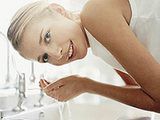 It is difficult to meet at least one woman who has never dyed her hair. For many, this has become as common a procedure as going to the hairdresser. Often in our quest to be beautiful, our friends, who are not professionals in this matter, help us. In this case, a situation may arise when traces of paint remain on the forehead, neck, ears and hands. What to do to get rid of them?
It is difficult to meet at least one woman who has never dyed her hair. For many, this has become as common a procedure as going to the hairdresser. Often in our quest to be beautiful, our friends, who are not professionals in this matter, help us. In this case, a situation may arise when traces of paint remain on the forehead, neck, ears and hands. What to do to get rid of them?
First, it's better to avoid black paint marks than to deal with them later. Therefore, all areas of the skin that may get paint should be lubricated with a rich cream. If this does not help, proceed to removing traces.
We will need a cotton swab dipped in soapy water. Just wipe the areas where the paint got on with a swab. This will help if it has not yet had time to be deeply absorbed. Therefore, it is better to wipe off the paint as soon as it gets on the skin. Soapy water can be replaced with a scrub.
If the paint has managed to be deeply absorbed into the skin and the previous method does not help, you can use alcohol-containing solutions (face lotion, cologne) or alcohol.
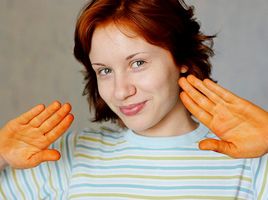 A rather expensive method, especially compared to the previous ones, is a means for cleaning skin from hair dye. Among them are the following: Utopik Cleaner, Hair Light Remover, Dikson Remover, Igora Color Remover. All of them will easily help you get rid of paint marks.
A rather expensive method, especially compared to the previous ones, is a means for cleaning skin from hair dye. Among them are the following: Utopik Cleaner, Hair Light Remover, Dikson Remover, Igora Color Remover. All of them will easily help you get rid of paint marks.
More inexpensive, but still effective remedy- “Curl.” It is mainly used for perming hair. Simply wipe off paint stains with a cotton swab soaked in this product. There is one unpleasant moment - “Lokon” has a pungent smell.
To get rid of paint stains, you can use available products: acetone, nail polish remover and hydrogen peroxide. These funds should not be abused; use them no more than once or twice.
You can also use other means that every housewife has in her home. For example, vegetable oil and lemon (citric acid will also work). Skin-friendly products also include toothpaste. All these products will clean the paint without harm or irritation to your skin.
If you need to remove traces of paint as soon as possible, apply peeling to dark areas of the skin. After the product swells, gently rub the skin. This procedure will not only get rid of paint, but also restore the skin and give it an even, healthy color.
div > .uk-panel")" data-uk-grid-margin="">




